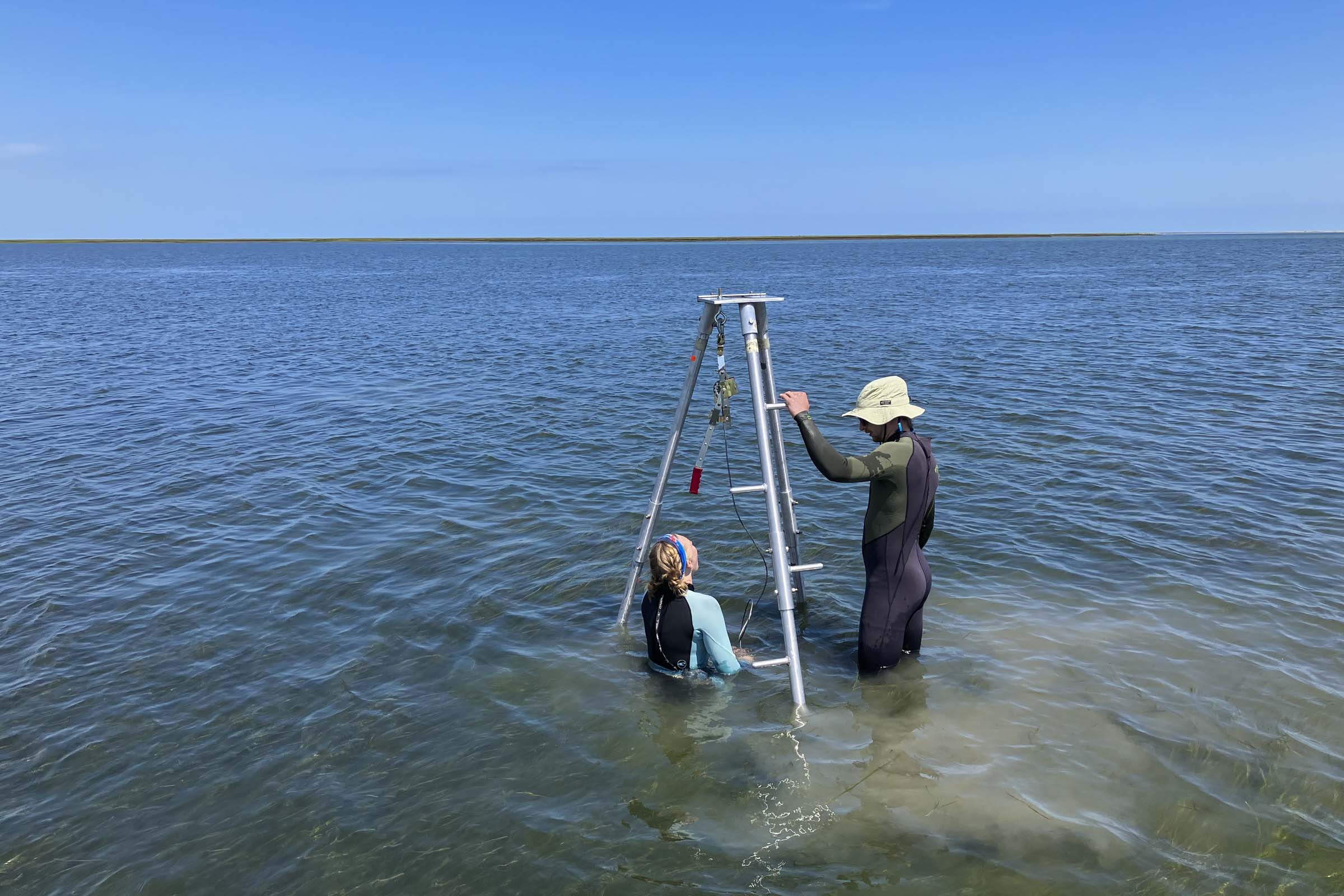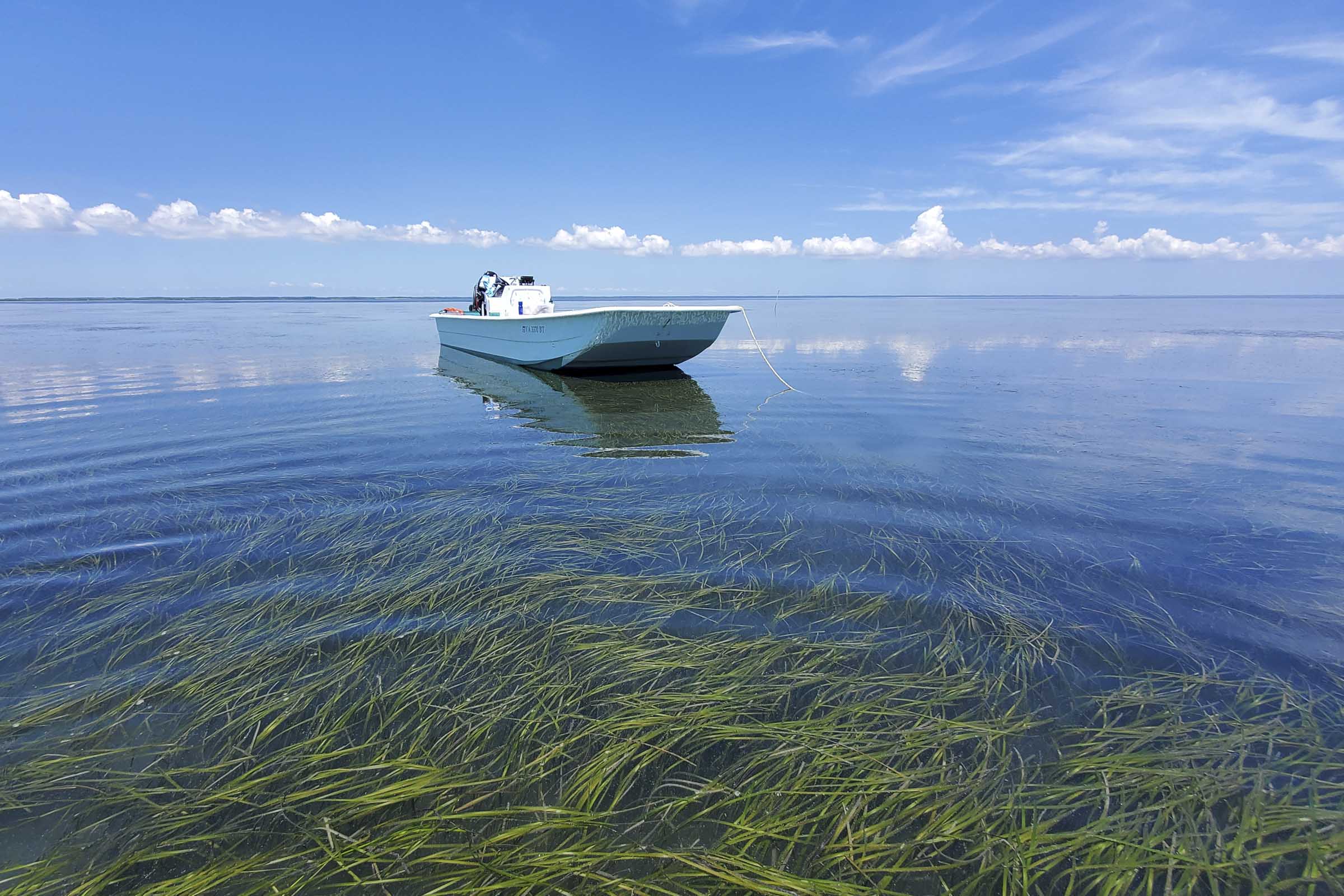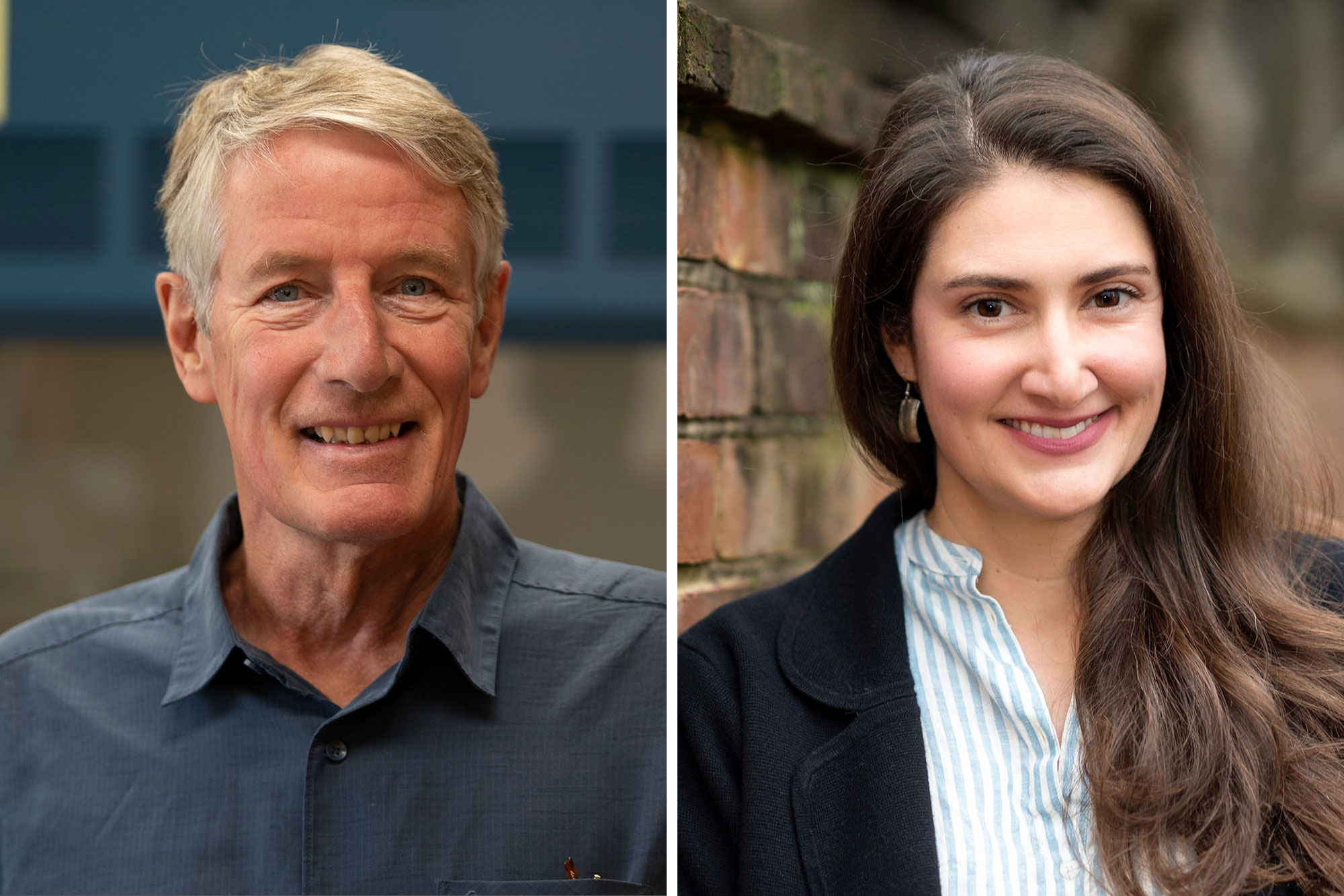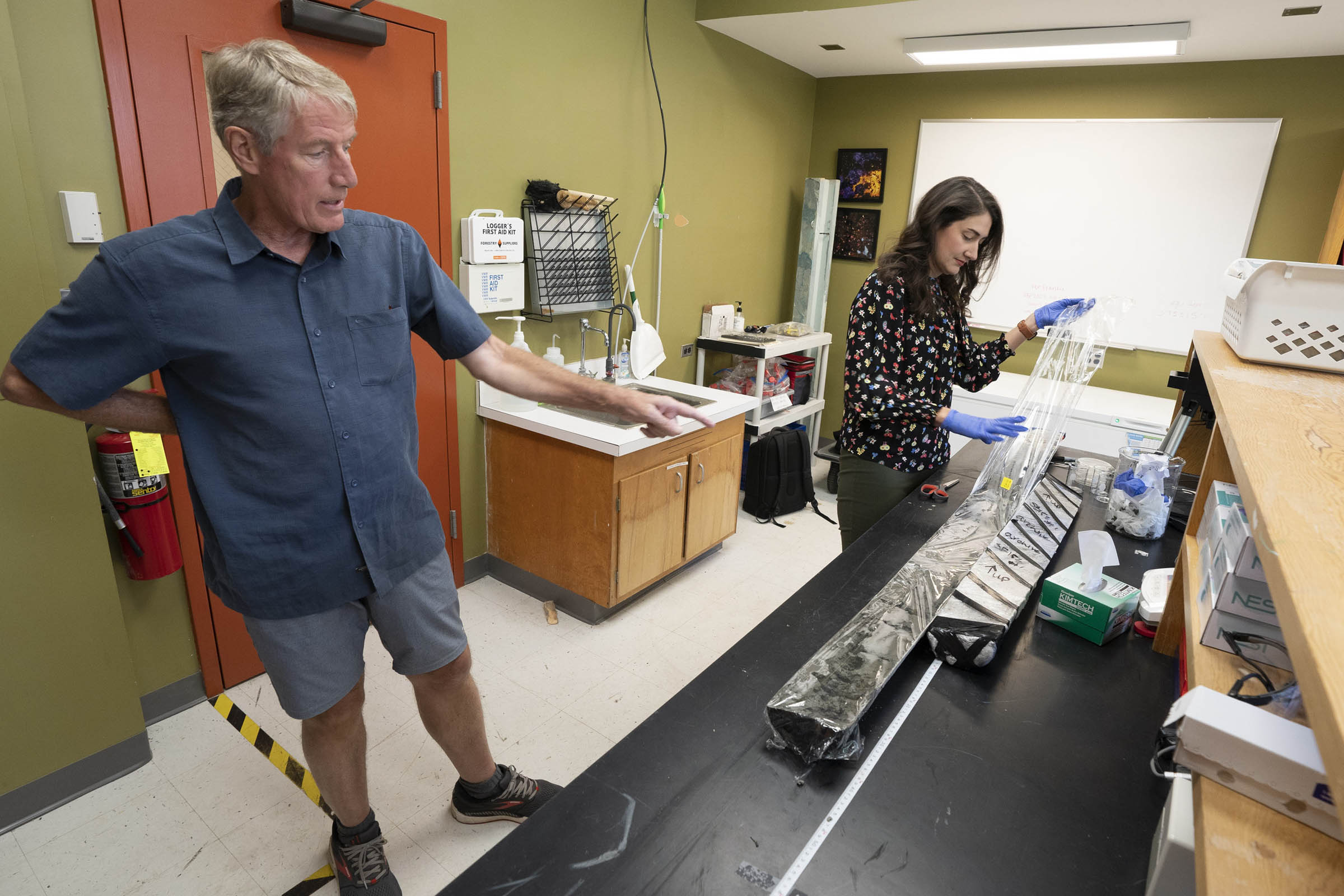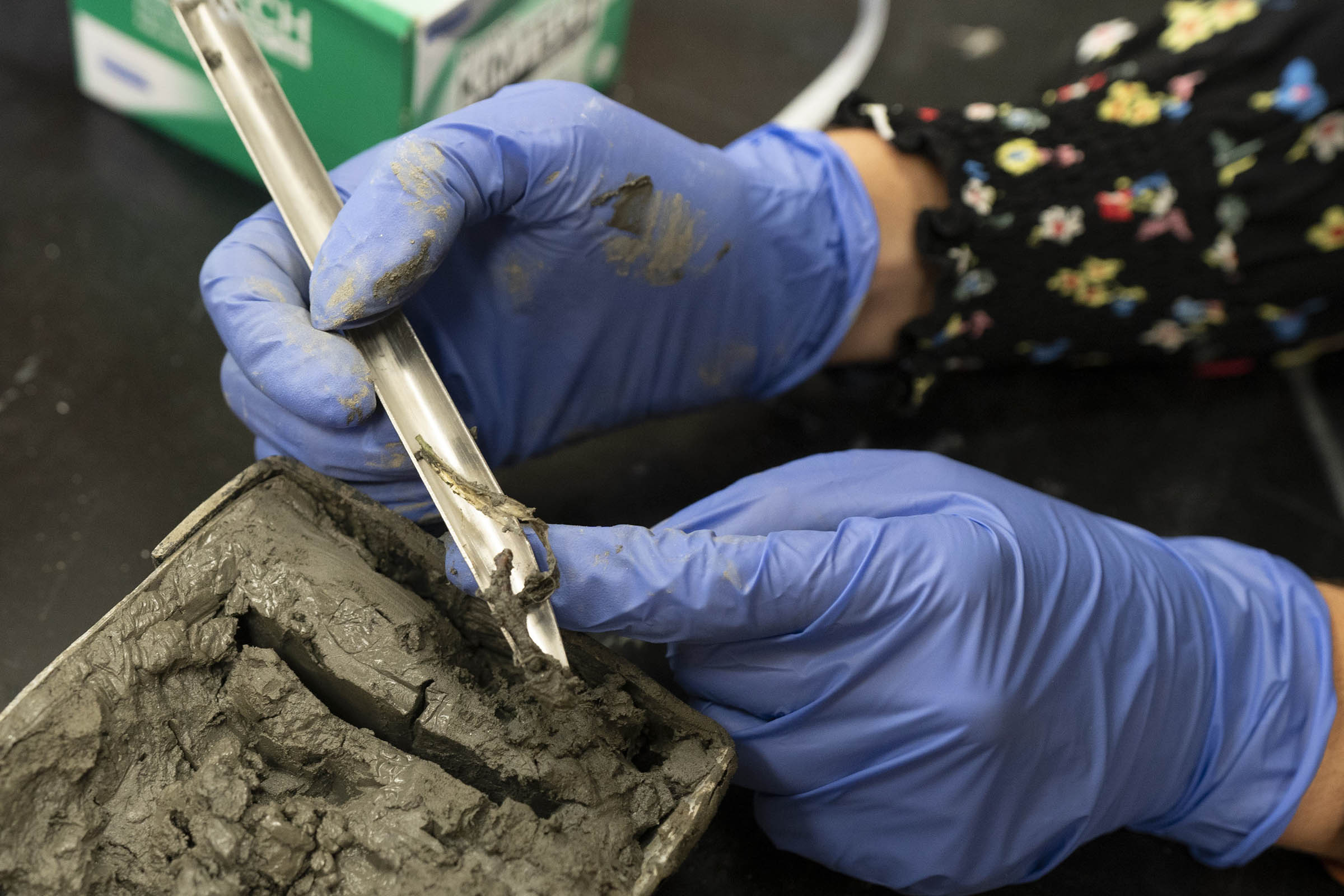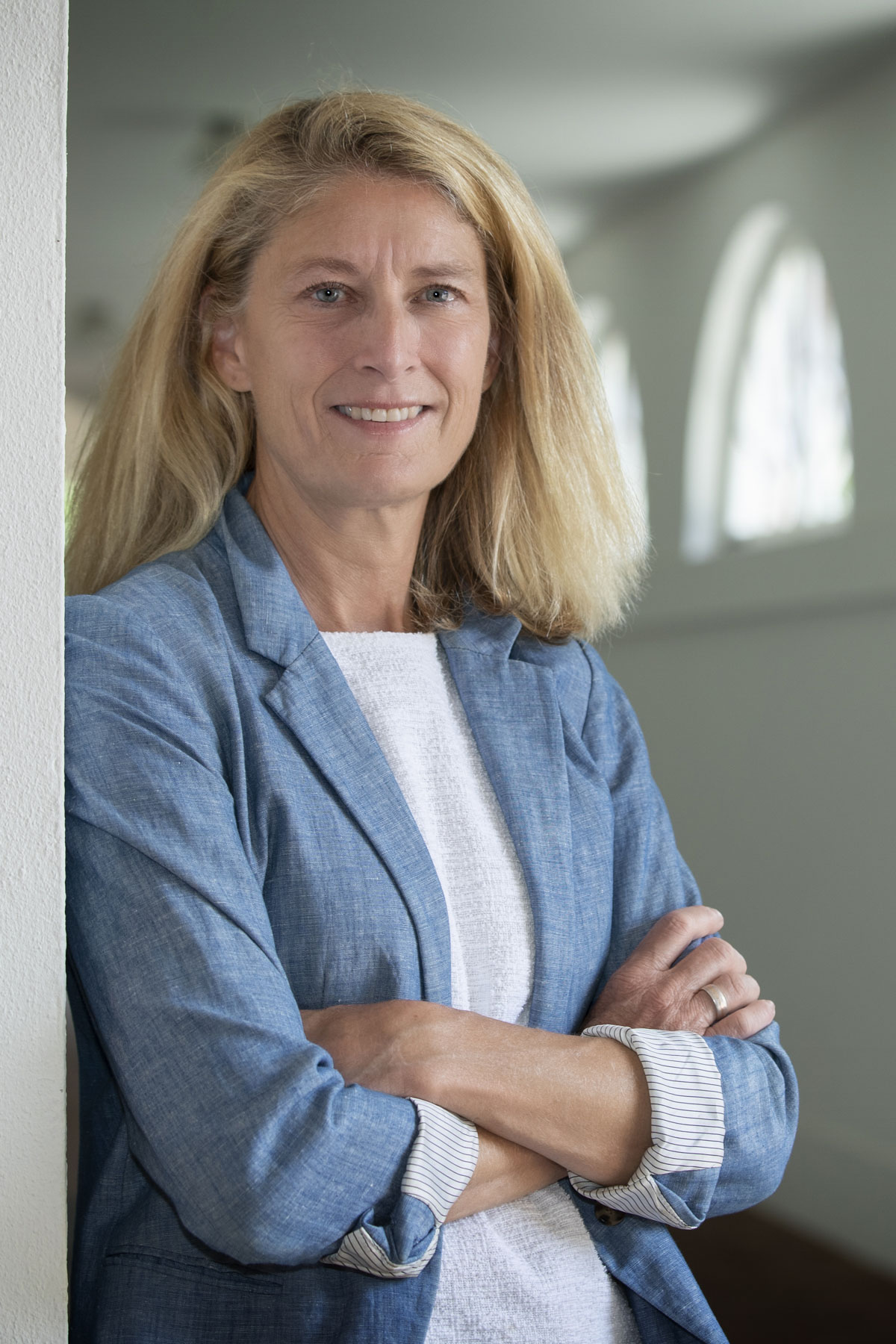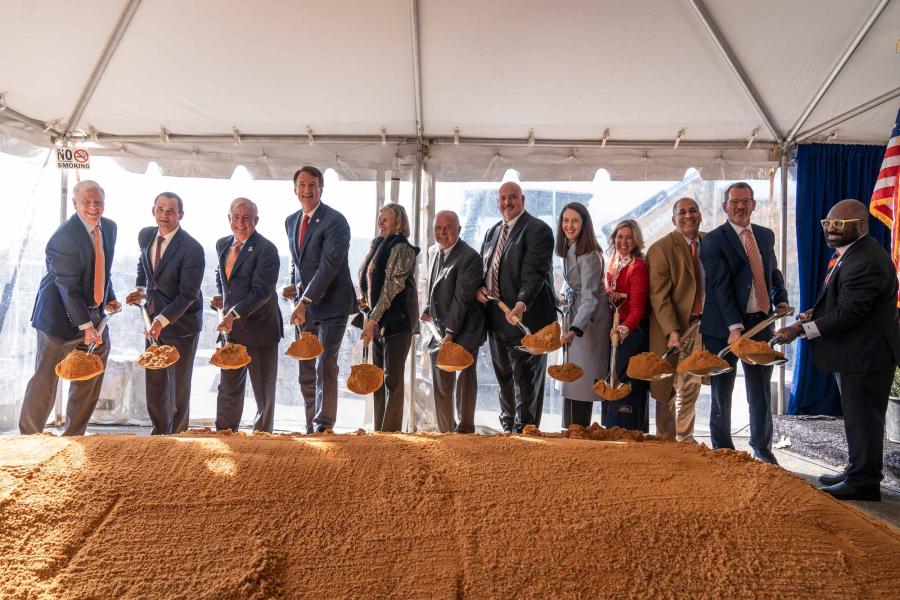“You take small samples of the wet sediment, and you dry it at a low temperature, so all the water disappears, and you weigh it,” he said. “Then you put it in a high-temperature oven, so all the organic material burns off, and you weigh it again. That difference is the organic matter. You can then convert that to carbon.”
The team already had a pretty good idea about which years in history matched certain core depths. But they needed to be exact.
They first performed a lead-210 dating analysis, which traces time through the radioactive decay of lead isotopes. They were able to pinpoint sediment back to around the year 1860.
They then determined the age of older sediment from greater core depths through carbon-14 dating.
Miller, still teasing out the sediment, pointed to a smattering of small, delicate shells she found. Some had been fractured and crushed by natural processes such as storms, making them unfit candidates for carbon dating.
“We can pick out shells from the sediment cores and know when they lived,” Miller said. “The shells are like us as people. We're taking in radiocarbon from the atmosphere, into our bodies and into our bones. But when we die, that stops happening. And this radiocarbon decays into different products once organisms die, and we can figure out when they lived in the past.”
The final lab analysis was to determine that eelgrass remnants had indeed been captured in those immediate decades before the almost 70-year band of dormancy where the carbon was found trapped.
“Given that the organic matter content is higher in the century-old sediment layers than in the top layers with modern seagrass, I think it is safe to say that close to 100% of carbon captured a long time ago has been preserved in the sediment,” Berg said.
In all, the researchers were eyeing a key span of 1,000 years.
So, blue carbon trapping is not only effective, but robust, even in the face of changes to the natural environment. That may be important as the world seeks resilient solutions to the climate dilemma.
“It’s a win on many fronts,” said environmental scientist Karen McGlathery, the Sherrell J. Aston Professor at UVA and an expert in shallow coastal systems, who contributed to the research.
Additional contributors included postdoctoral researcher Marion McKenzie, and UVA graduate and undergraduate students Renee Hebert, Luke Groff, Charlotte Wiman, Mackenzie Fiss, Sophia Kuzminski, Tahi Wiggins, Santiago Munevar Garcia and Ziwen Guo. Northeastern University professors Samuel Munoz and Aron Stubbins also collaborated.
“Seagrass meadows provide so many benefits beyond blue carbon, like promoting fisheries and improving water quality,” McGlathery said. “We are now working on putting a market value on those benefits as well. That will give us the whole picture of why seagrass conservation and restoration are important.”
